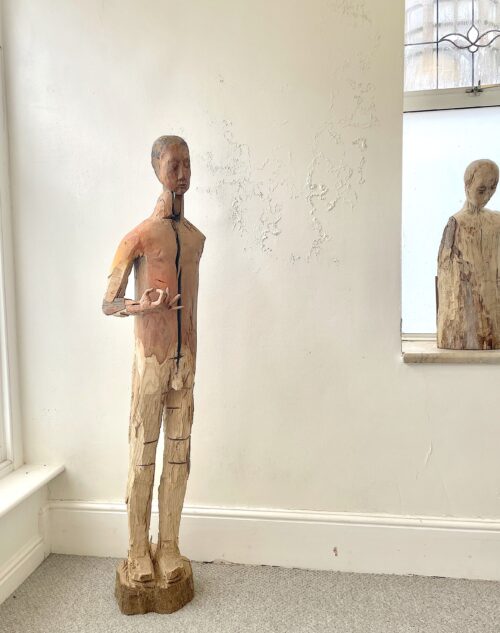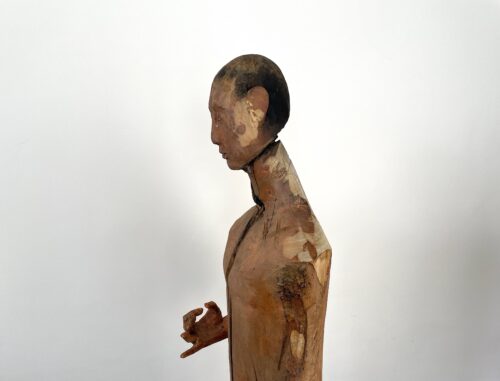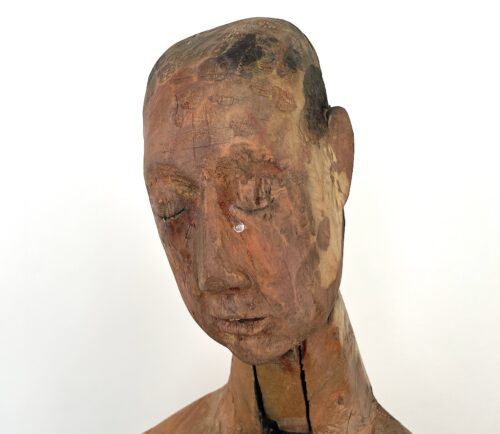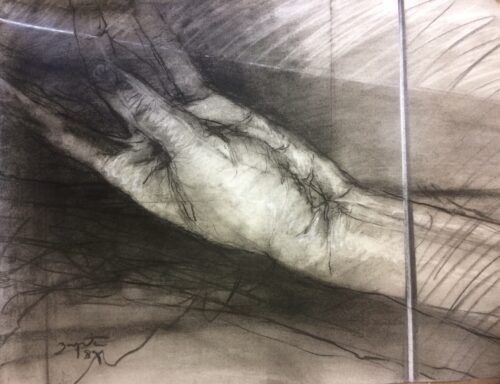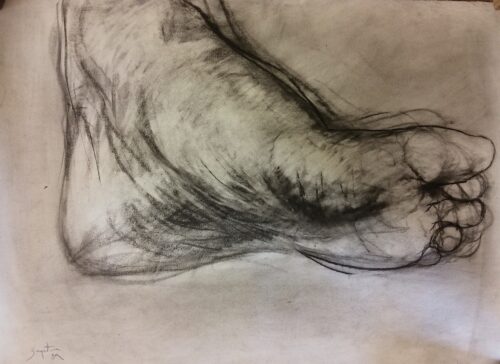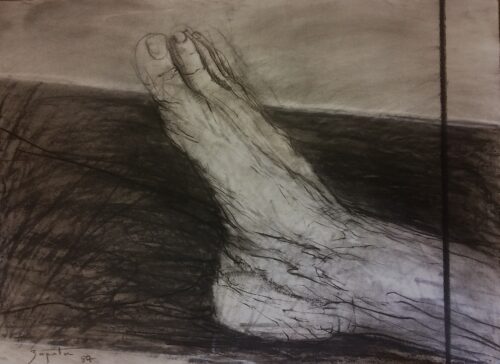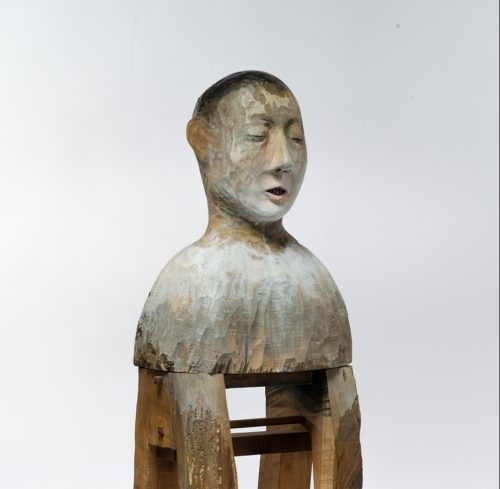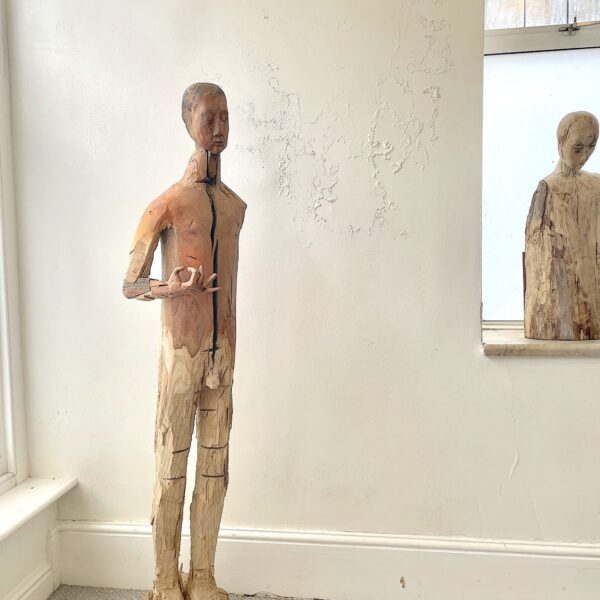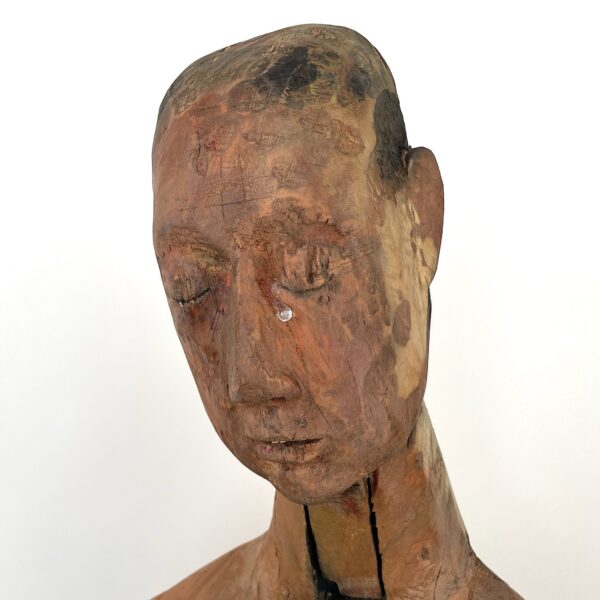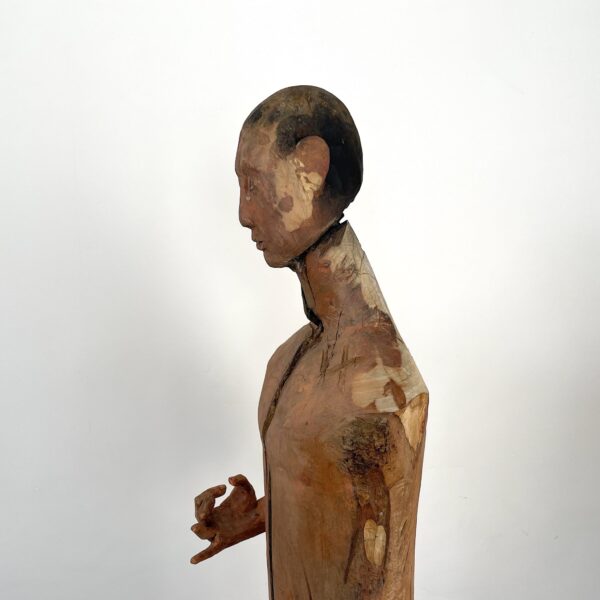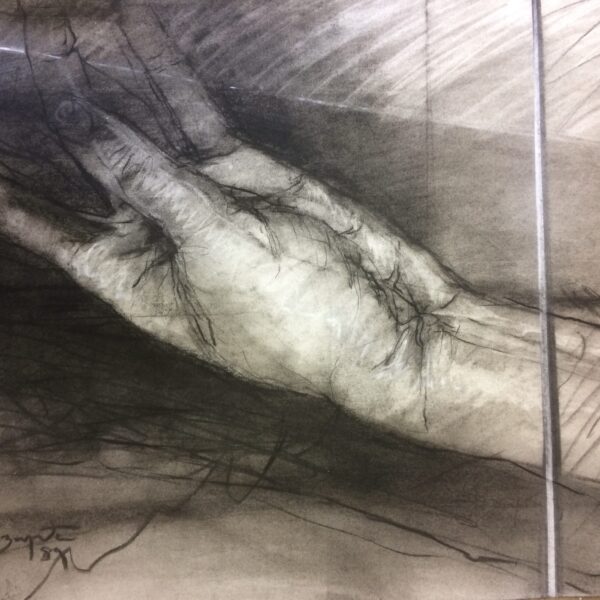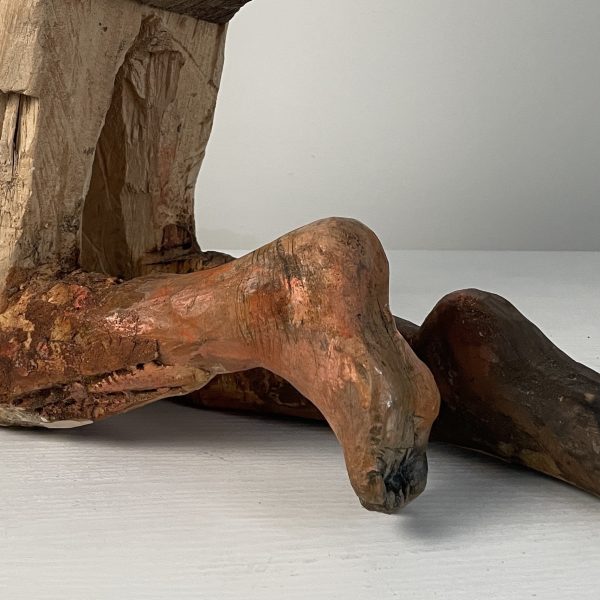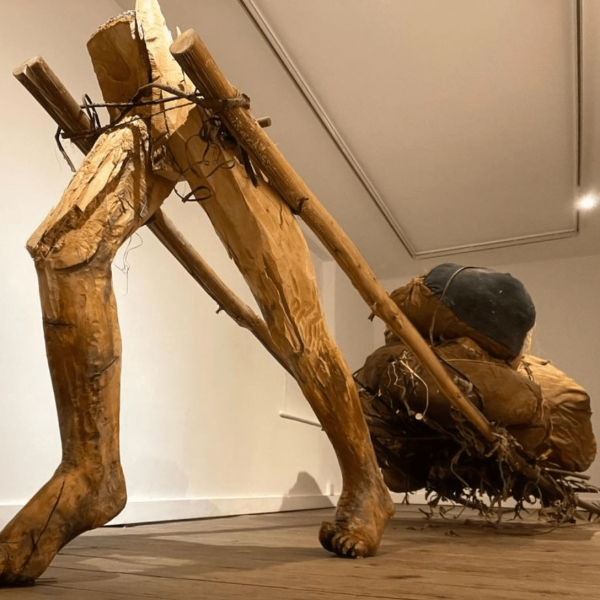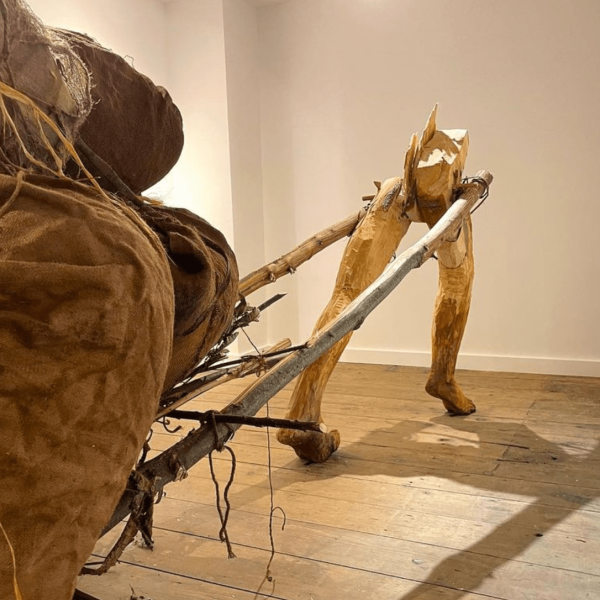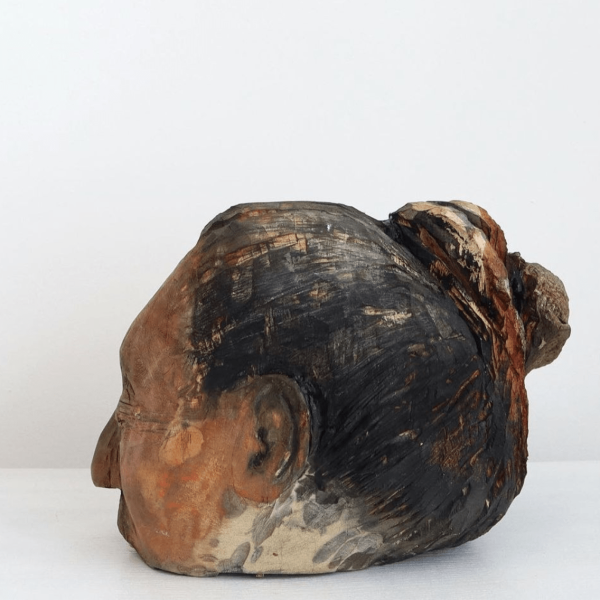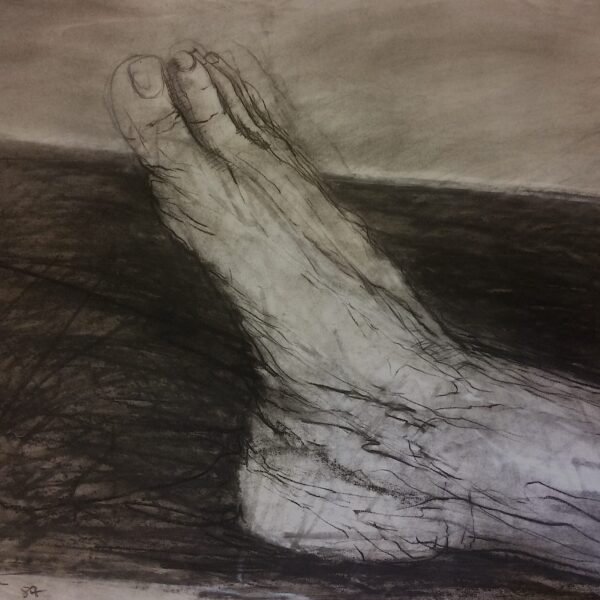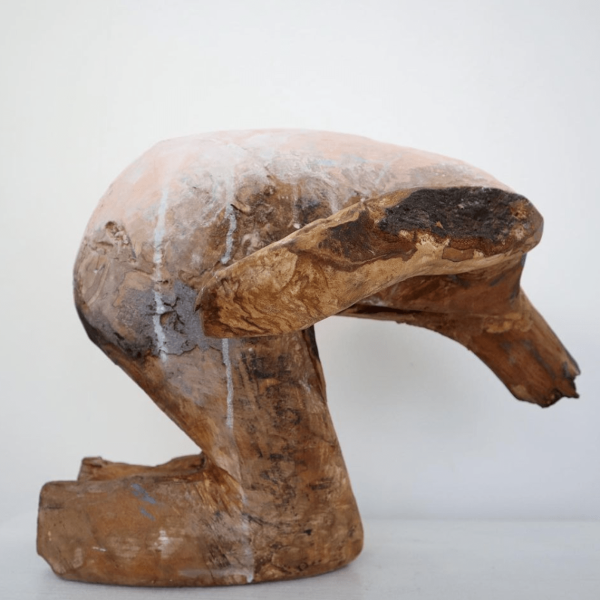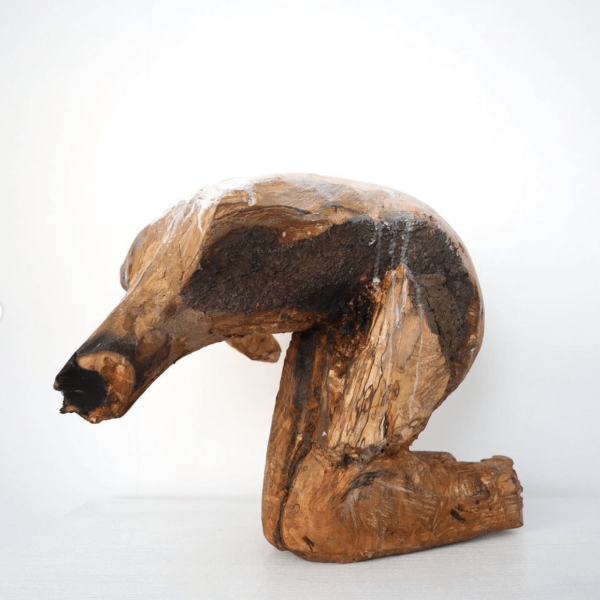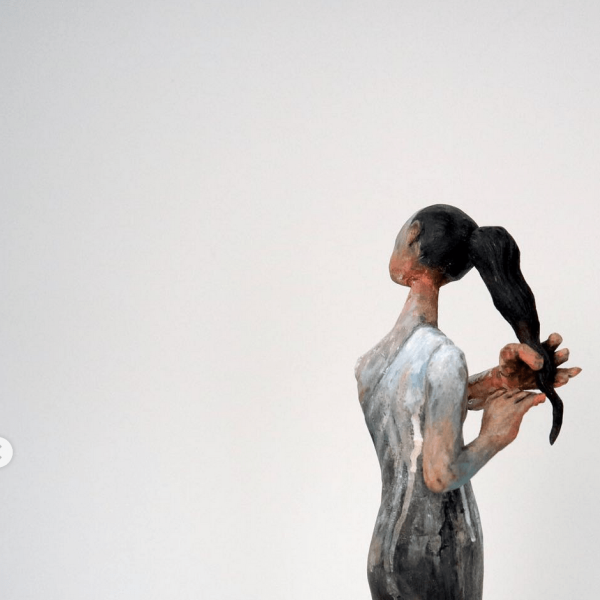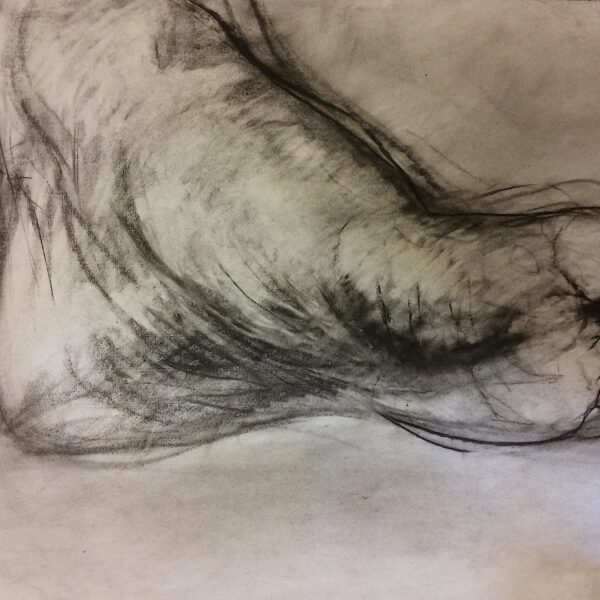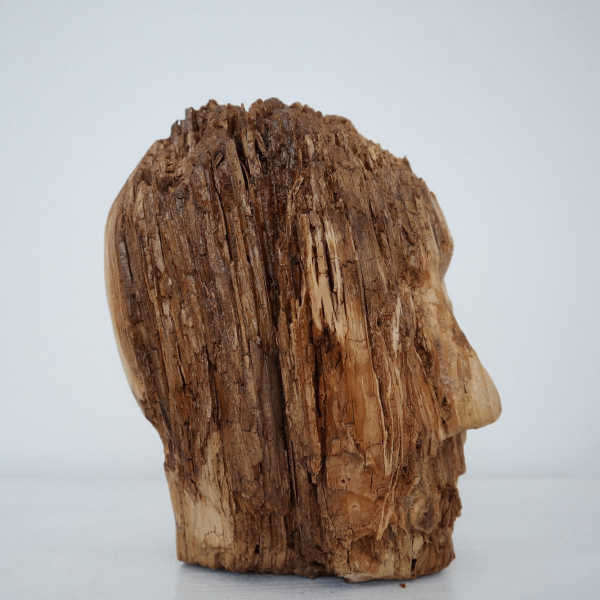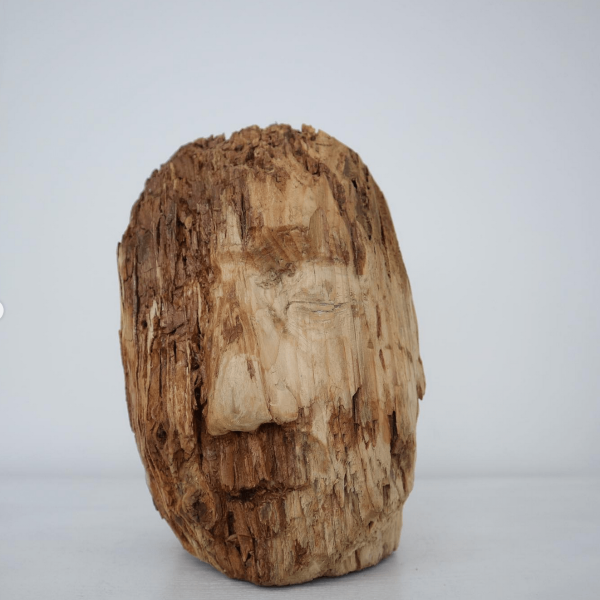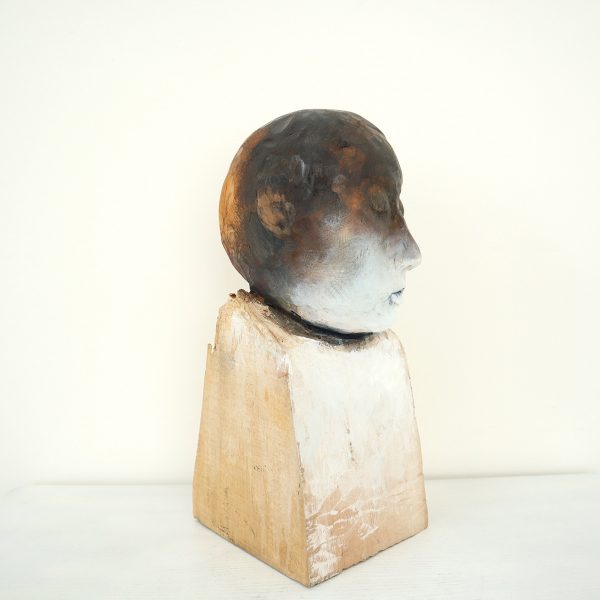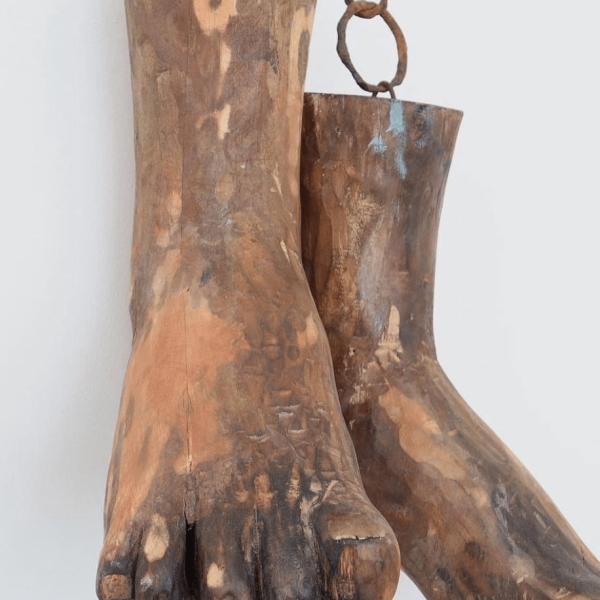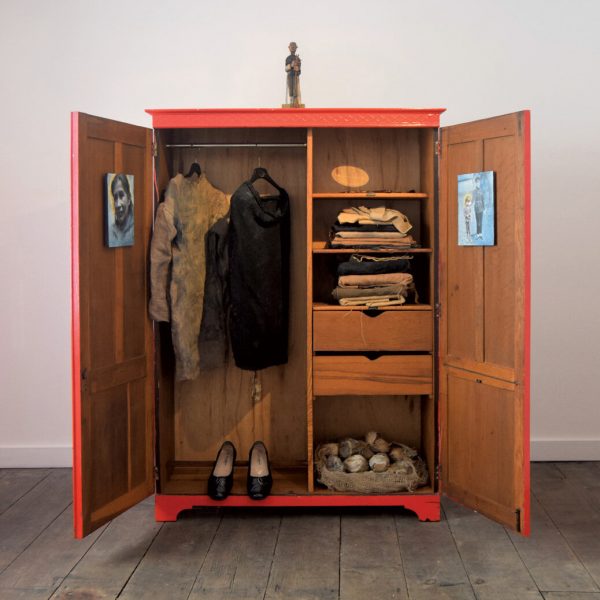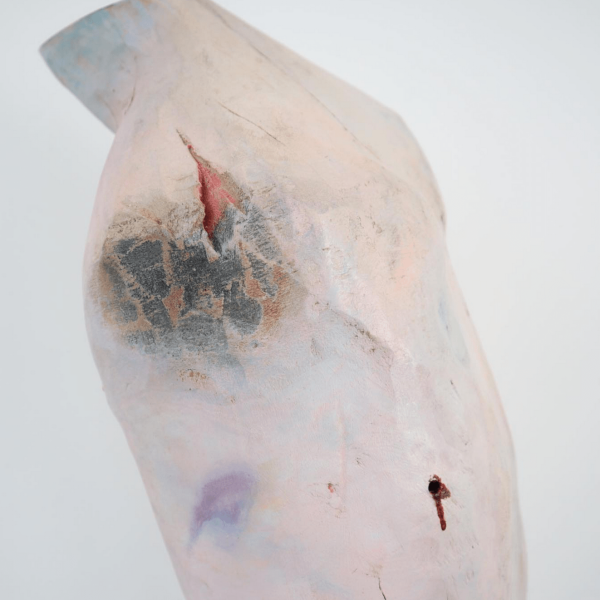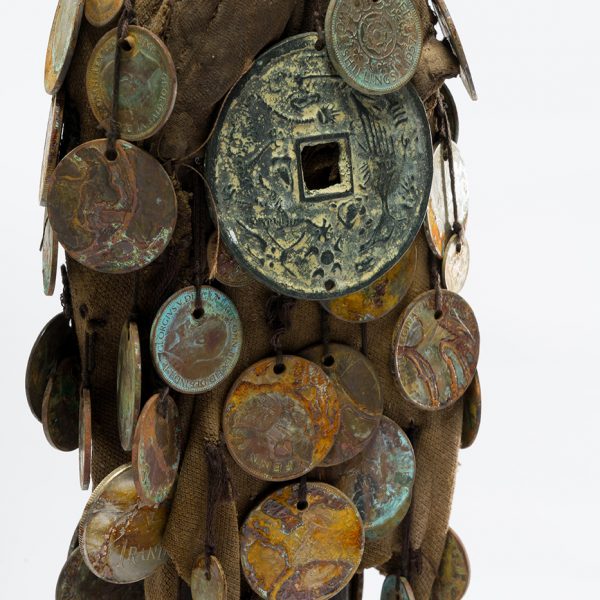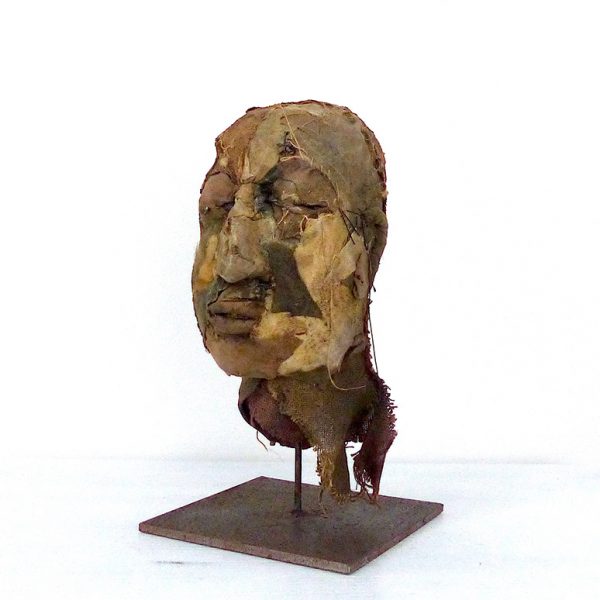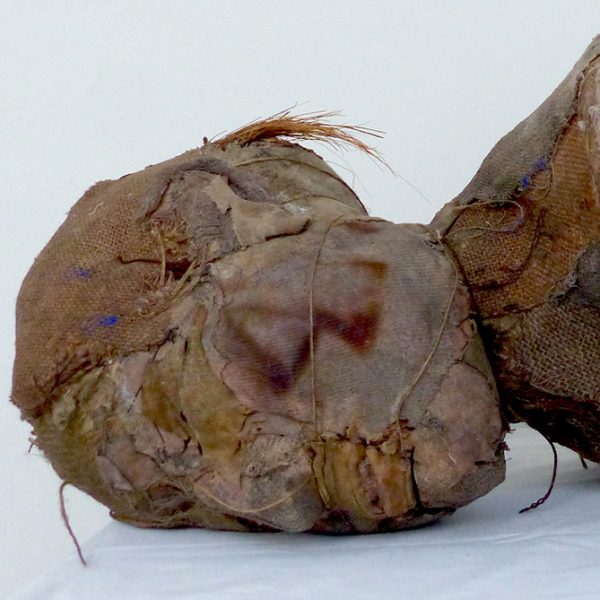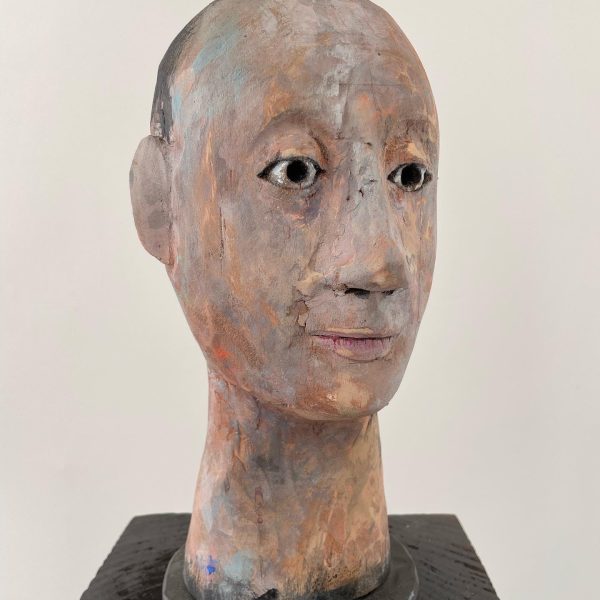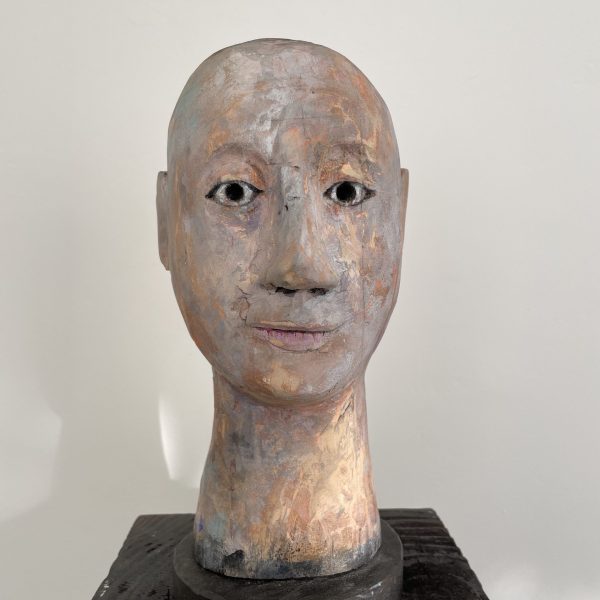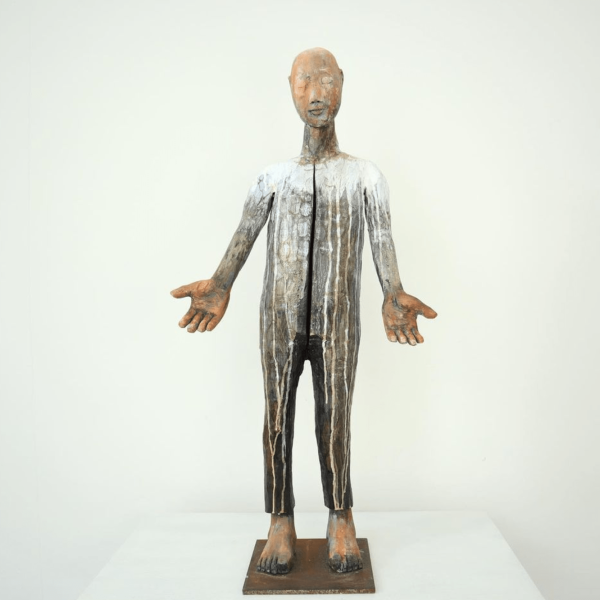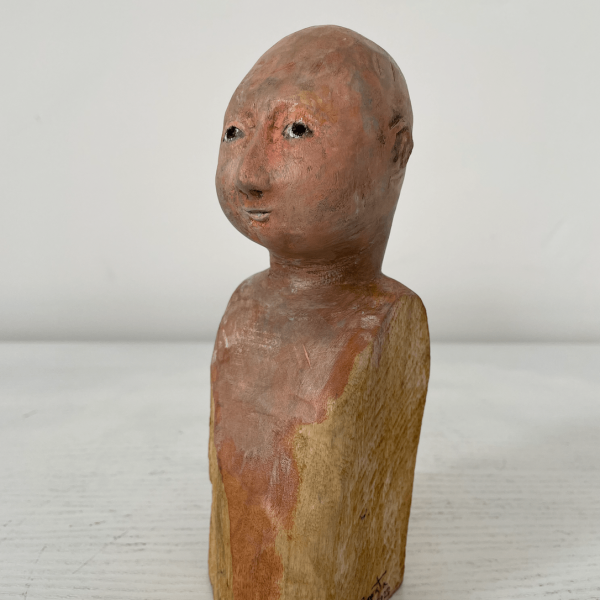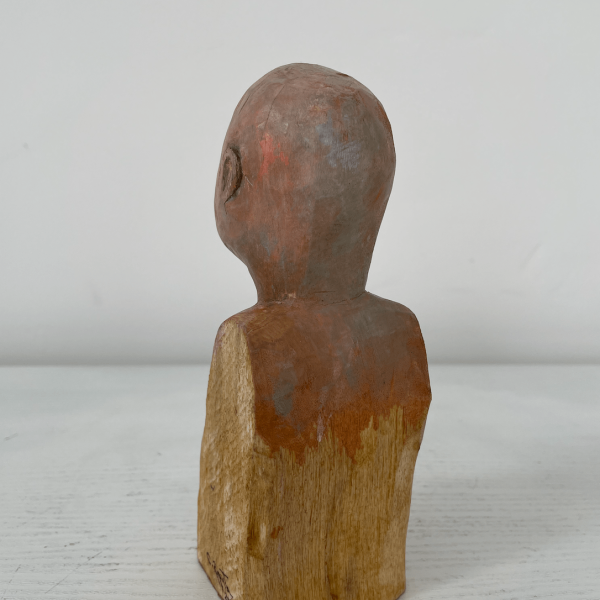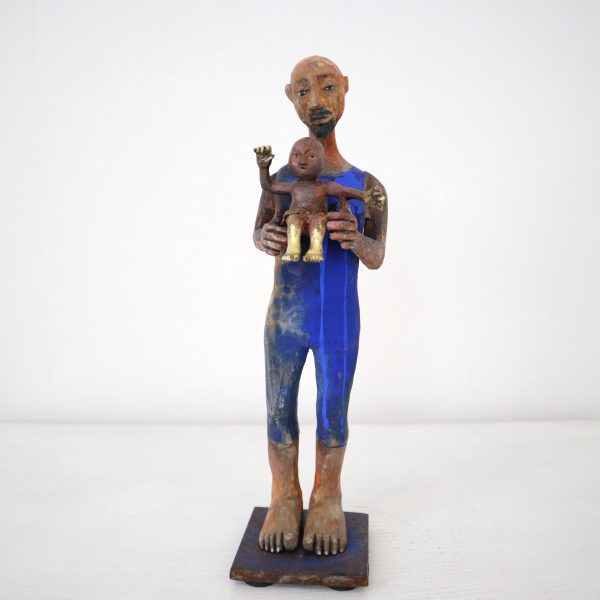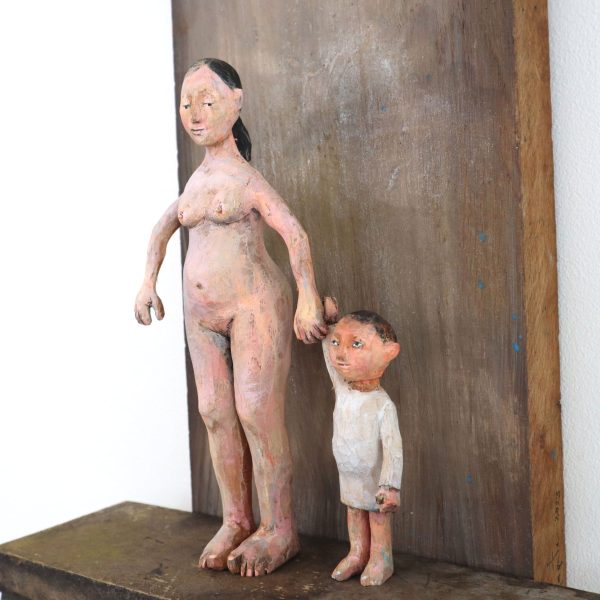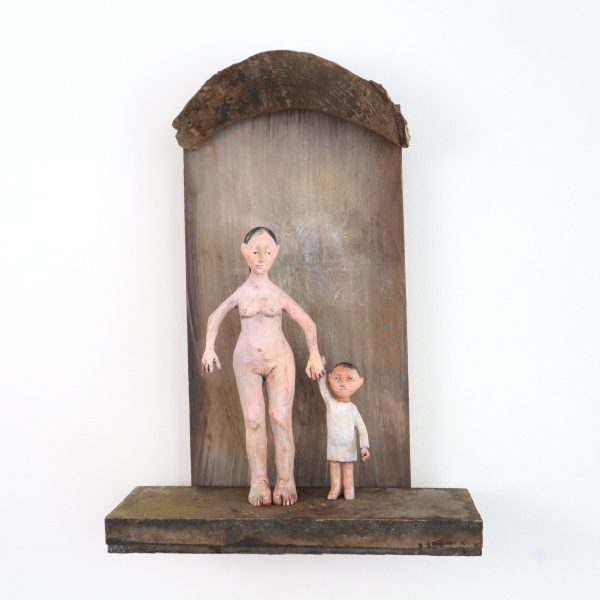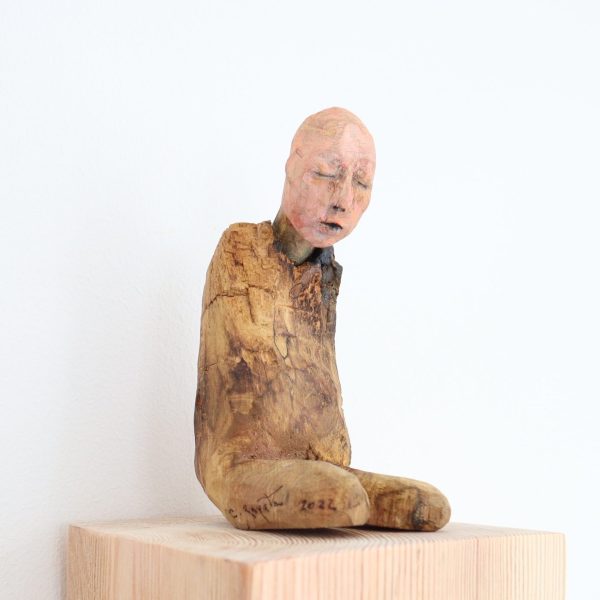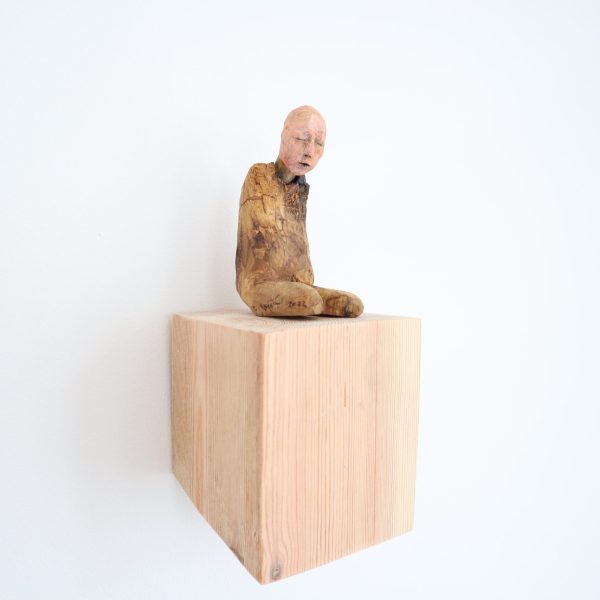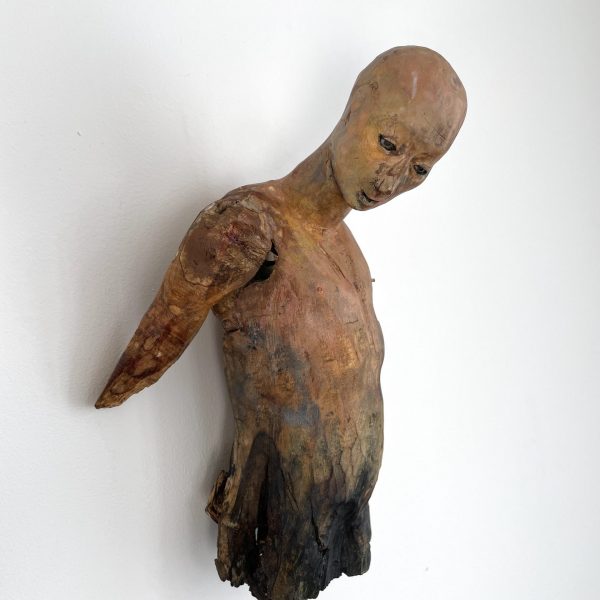Gallery
Trail of Tears, Carlos Zapata 2021. Polychrome carved wood and glass eyes, H 90cm x W 40cm x D 42cm.
The ‘Trail of Tears’ was part of a series of forced relocations of approximately 100,000 Native Americans between 1830 and 1850 by the US Government also known as the Indian removal. What was left of the different nations including the Cherokee, Muscogee, Seminole, Chickasaw and Choctaw were forcibly removed and made to turn their backs on their ancestral land. These groups would suffer from exposure, disease and ultimately starvation as they were forced to walk to an Indian reservation 3000 miles away. Some 20,000 died before they could reach their final destination, succumbing to illness or the brutality of the military herding them as they walked. Today, forced immigration is still an ongoing problem that occurs globally, as well as the effects of economic poverty, natural disasters, politics and mass developmental projects. Immigration by groups is as old as the human history.
Forbidden Mother Tongue, Carlos Zapata 2021. Polychrome wood, H 87cm x W 30cm x D 26cm.
Throughout history, colonisers often imposed their language onto the communities they overthrew, forbidding natives to speak in their mother tongues. In some cases colonisers systematically prohibited native languages, subordinating a nation and discarding of both their linguistic and cultural structures. Degeneration of a language, often referred to as ‘linguistic genocide’ or ‘linguicide’, that involves the systematic replacement of an indigenous language with the language of an outside, dominant group, resulting in a permanent language shift and the death of the indigenous language along with a great part of their culture.
Carmen’s Head & Belongings’, Carlos Zapata 2018. Mixed media.
Carmen was my grandmother’s house keeper. One of my earliest memories as a small boy was her feet, often times, she didn’t wear any shoes. Carmen was always feeding me with love, cleaning and cooking, the smell of food in the coal fire being something I always associated with her. Carmen’s material belongings were limited, when I was a child her clothes reminded me of the hessian sacks you would find containing vegetables in the pantry. She lived in an almost feral state, a hangover of postcolonial slavery and had the typical background of a domestic worker from a third world country. Coming from a rural Colombia, she was very poor with no education or ability to read and write. She was in a hopeless position in a very class based society, yet she was altruistic, always providing for the benefit of others, giving and serving. She used to pray to Saint Martin de Porras for hope.
Primordial, Carlos Zapata 2022.
Polychrome Wood, H 213cm
I created this sculpture thinking about the first encounter, the very first gaze, between, Homo Sapiens, and Neanderthals when the early immigration of modern humans from Africa and Asia to Europe first occurred. Specialists discovered species of Neanderthals across Europe, that became extinct around 40,000 years ago.
Exodus, Carlos Zapata 2022.
Mixed media, H 160cm x W 140cm x 500cm
Exodus refers to the ancient immigration that has occurred for thousands of years since the beginning of human existence. Humans carry with them DNA, religion, costumes, and an array of cultural objects. The movement of people from one land to another, is a fundamental aspect of human history, though it was as controversial hundreds of years ago as it is today.








